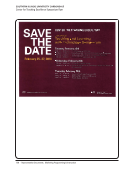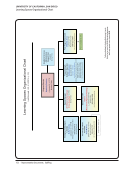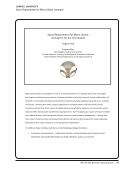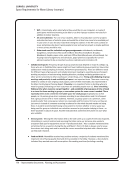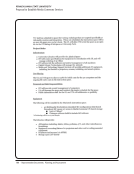SPEC Kit 342: Next-Gen Learning Spaces · 175
CORNELL UNIVERSITY
Space Requirements for Mann Library (excerpts)
● Design for flexibility (post and beam construction, mobility, track systems, dropped ceilings,
wire hangers)
● Though each space should have a coherent story or vision for its purpose, let students dictate
what a space will be in the end. Don't try to set the vision for the space on your own
● Don't be afraid to pick the wrong thing and be willing to let things evolve
● The character of spaces changes based on time of day and the changes in the spaces around it
Conclusion
Given the rapidly shifting technological and scholarly communication landscape, the changes in teaching
and learning toward more student-‐centered, active and collaborative models, and the new ways
students, faculty and staff work, the old paradigm of renovating library spaces is no longer sufficient. As
libraries continue to move from storage spaces for physical materials to centers for learning, creation,
access, preservation, and collaboration around information in all formats, the way we envision library
space needs to be more responsive and flexible to meet the needs of today’s users and those to come.
No longer can we simply calculate estimated square footage for physical materials and seating, budget
one-‐time expenditures for sturdy furniture and standard replacement cycles for computers, and expect
our assumptions to hold for years to come. To meet needs that we couldn’t envision even a short time
ago, we must now look at library spaces as being flexible, iterative, and co-‐created by our users. We
must engage our users directly, not only by asking for feedback and assessing their use of library spaces,
but also by involving them in their formation in an ongoing process. We must also take our cues from
cutting edge research and implementation being done at Cornell, other peer institutions, innovative
workplaces, and architectural and design firms. In this manner, we can implement a design process that
will make Mann Library a campus hub and leader now and in the future.
CORNELL UNIVERSITY
Space Requirements for Mann Library (excerpts)
● Design for flexibility (post and beam construction, mobility, track systems, dropped ceilings,
wire hangers)
● Though each space should have a coherent story or vision for its purpose, let students dictate
what a space will be in the end. Don't try to set the vision for the space on your own
● Don't be afraid to pick the wrong thing and be willing to let things evolve
● The character of spaces changes based on time of day and the changes in the spaces around it
Conclusion
Given the rapidly shifting technological and scholarly communication landscape, the changes in teaching
and learning toward more student-‐centered, active and collaborative models, and the new ways
students, faculty and staff work, the old paradigm of renovating library spaces is no longer sufficient. As
libraries continue to move from storage spaces for physical materials to centers for learning, creation,
access, preservation, and collaboration around information in all formats, the way we envision library
space needs to be more responsive and flexible to meet the needs of today’s users and those to come.
No longer can we simply calculate estimated square footage for physical materials and seating, budget
one-‐time expenditures for sturdy furniture and standard replacement cycles for computers, and expect
our assumptions to hold for years to come. To meet needs that we couldn’t envision even a short time
ago, we must now look at library spaces as being flexible, iterative, and co-‐created by our users. We
must engage our users directly, not only by asking for feedback and assessing their use of library spaces,
but also by involving them in their formation in an ongoing process. We must also take our cues from
cutting edge research and implementation being done at Cornell, other peer institutions, innovative
workplaces, and architectural and design firms. In this manner, we can implement a design process that
will make Mann Library a campus hub and leader now and in the future.










































































































































